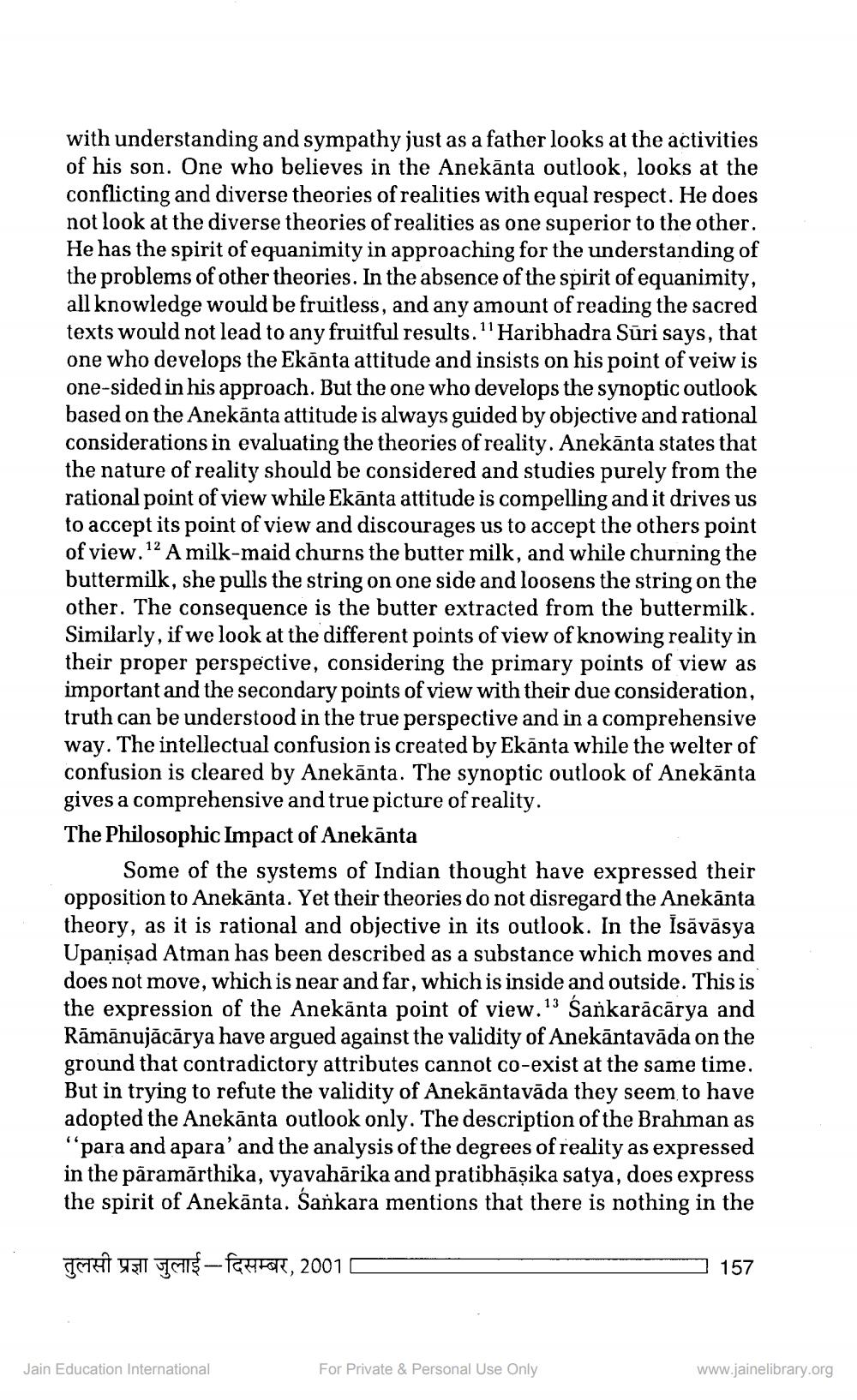________________
with understanding and sympathy just as a father looks at the activities of his son. One who believes in the Anekanta outlook, looks at the conflicting and diverse theories of realities with equal respect. He does not look at the diverse theories of realities as one superior to the other. He has the spirit of equanimity in approaching for the understanding of the problems of other theories. In the absence of the spirit of equanimity, all knowledge would be fruitless, and any amount of reading the sacred texts would not lead to any fruitful results. "Haribhadra Sūri says, that one who develops the Ekanta attitude and insists on his point of veiw is one-sided in his approach. But the one who develops the synoptic outlook based on the Anekanta attitude is always guided by objective and rational considerations in evaluating the theories of reality. Anekānta states that the nature of reality should be considered and studies purely from the rational point of view while Ekanta attitude is compelling and it drives us to accept its point of view and discourages us to accept the others point of view. 12 A milk-maid churns the butter milk, and while churning the buttermilk, she pulls the string on one side and loosens the string on the other. The consequence is the butter extracted from the buttermilk. Similarly, if we look at the different points of view of knowing reality in their proper perspective, considering the primary points of view as important and the secondary points of view with their due consideration, truth can be understood in the true perspective and in a comprehensive way. The intellectual confusion is created by Ekanta while the welter of confusion is cleared by Anekānta. The synoptic outlook of Anekanta gives a comprehensive and true picture of reality.
The Philosophic Impact of Anekānta
Some of the systems of Indian thought have expressed their opposition to Anekanta. Yet their theories do not disregard the Anekānta theory, as it is rational and objective in its outlook. In the Īsāvāsya Upanisad Atman has been described as a substance which moves and does not move, which is near and far, which is inside and outside. This is the expression of the Anekanta point of view.13 Śankarācārya and Rāmānujācārya have argued against the validity of Anekantavāda on the ground that contradictory attributes cannot co-exist at the same time. But in trying to refute the validity of Anekāntavāda they seem to have adopted the Anekānta outlook only. The description of the Brahman as "para and apara' and the analysis of the degrees of reality as expressed in the paramarthika, vyavahārika and pratibhāṣika satya, does express the spirit of Anekānta. Sankara mentions that there is nothing in the
तुलसी प्रज्ञा जुलाई - दिसम्बर, 2001
Jain Education International
For Private & Personal Use Only
157
www.jainelibrary.org




